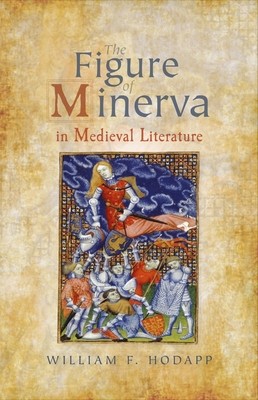
- We will send in 10–14 business days.
- Author: William F Hodapp
- Publisher: Boydell & Brewer
- ISBN-10: 1843845393
- ISBN-13: 9781843845393
- Format: 15.2 x 23.6 x 2.5 cm, kieti viršeliai
- Language: English
- SAVE -10% with code: EXTRA
Reviews
Description
First major study of the representation of Minerva in the Middle Ages, giving insights into classical reception.
Images of Minerva, the Roman goddess of wisdom, appear frequently in medieval literature, derived from antique culture and literature; redemptress, mistress of the liberal arts, patroness of princes, idol, and Venus' ally. Throughout the high to late Middle Ages, Peter Abelard, Guido delle Colonne, John Gower, Geoffrey Chaucer, and Christine de Pizan, among others, drew on and developed these images, but they are particularly prevalent in a number of fifteenth- and early sixteenth-century English and Scots allegorical and dream-vision poems, including John Lydgate's Reson and Sensuallyte and Temple of Glas, the anonymous Court of Sapience and Assembly of Gods, James I's Kingis Quair, Charles d'Orleans' Fortunes Stabilnes, and William Dunbar's Golden Targe.This book offers the first full-length examination of these depictions, bringing out the receptionof classical culture. Via close readings of the various poets, it enables us to understand how her figure was used, and also, and most importantly, to interpret and transform the poetic and cultural traditions from which she springs. WILLIAM F. HODAPP is Professor of English and Coordinator of Medieval and Renaissance Studies at The College of St. Scholastica, Duluth, Minnesota.
EXTRA 10 % discount with code: EXTRA
The promotion ends in 21d.06:11:51
The discount code is valid when purchasing from 10 €. Discounts do not stack.
- Author: William F Hodapp
- Publisher: Boydell & Brewer
- ISBN-10: 1843845393
- ISBN-13: 9781843845393
- Format: 15.2 x 23.6 x 2.5 cm, kieti viršeliai
- Language: English English
First major study of the representation of Minerva in the Middle Ages, giving insights into classical reception.
Images of Minerva, the Roman goddess of wisdom, appear frequently in medieval literature, derived from antique culture and literature; redemptress, mistress of the liberal arts, patroness of princes, idol, and Venus' ally. Throughout the high to late Middle Ages, Peter Abelard, Guido delle Colonne, John Gower, Geoffrey Chaucer, and Christine de Pizan, among others, drew on and developed these images, but they are particularly prevalent in a number of fifteenth- and early sixteenth-century English and Scots allegorical and dream-vision poems, including John Lydgate's Reson and Sensuallyte and Temple of Glas, the anonymous Court of Sapience and Assembly of Gods, James I's Kingis Quair, Charles d'Orleans' Fortunes Stabilnes, and William Dunbar's Golden Targe.This book offers the first full-length examination of these depictions, bringing out the receptionof classical culture. Via close readings of the various poets, it enables us to understand how her figure was used, and also, and most importantly, to interpret and transform the poetic and cultural traditions from which she springs. WILLIAM F. HODAPP is Professor of English and Coordinator of Medieval and Renaissance Studies at The College of St. Scholastica, Duluth, Minnesota.


Reviews